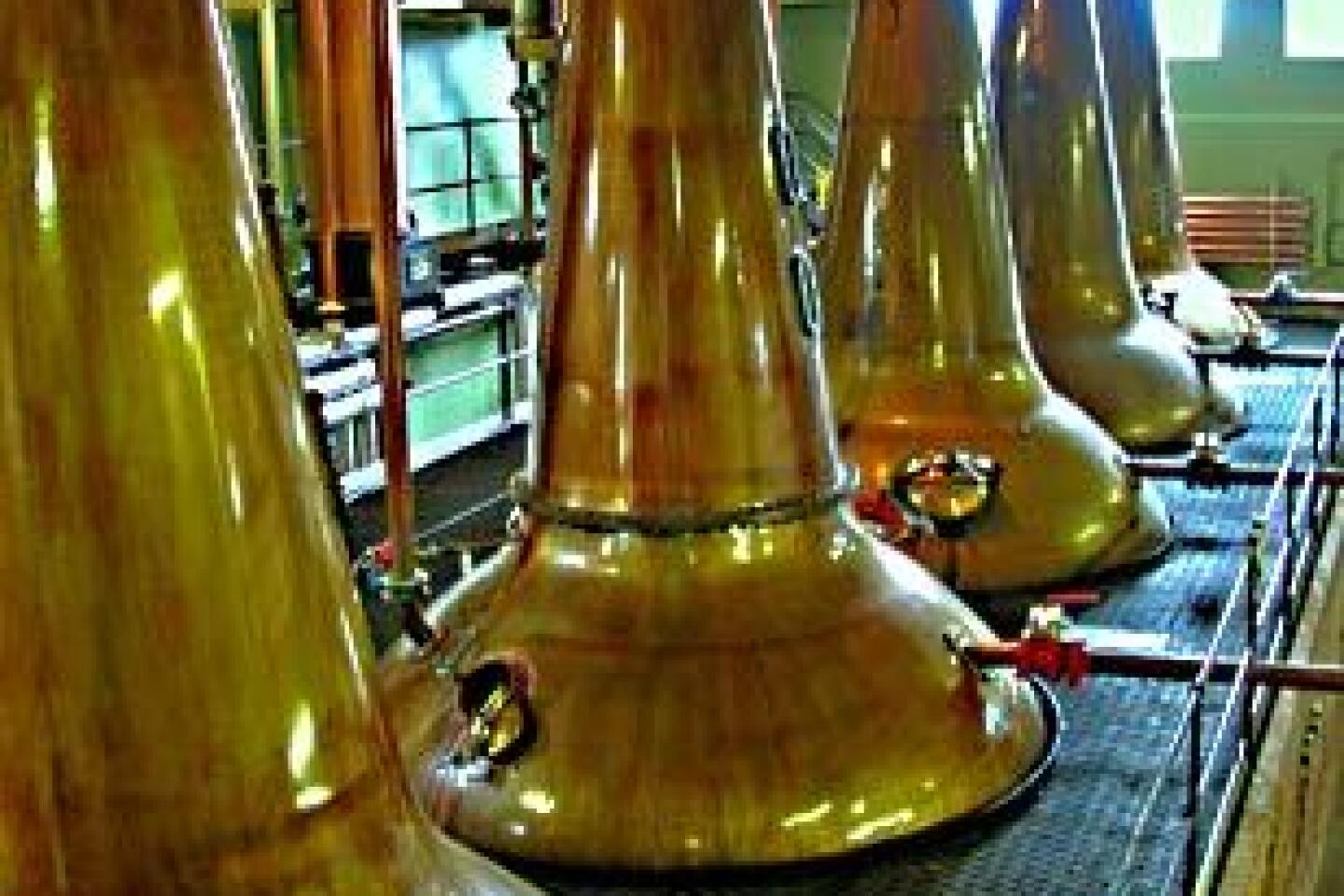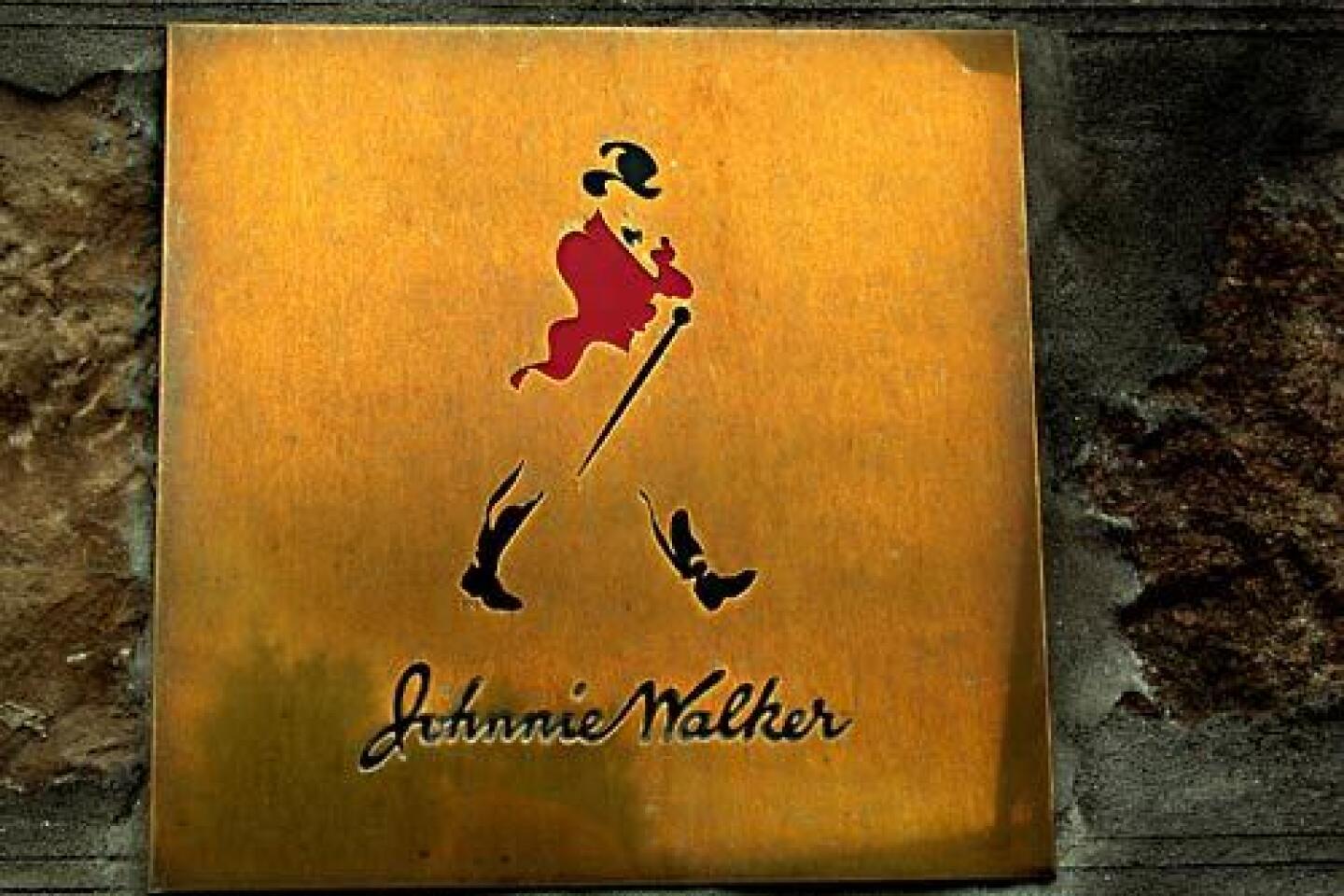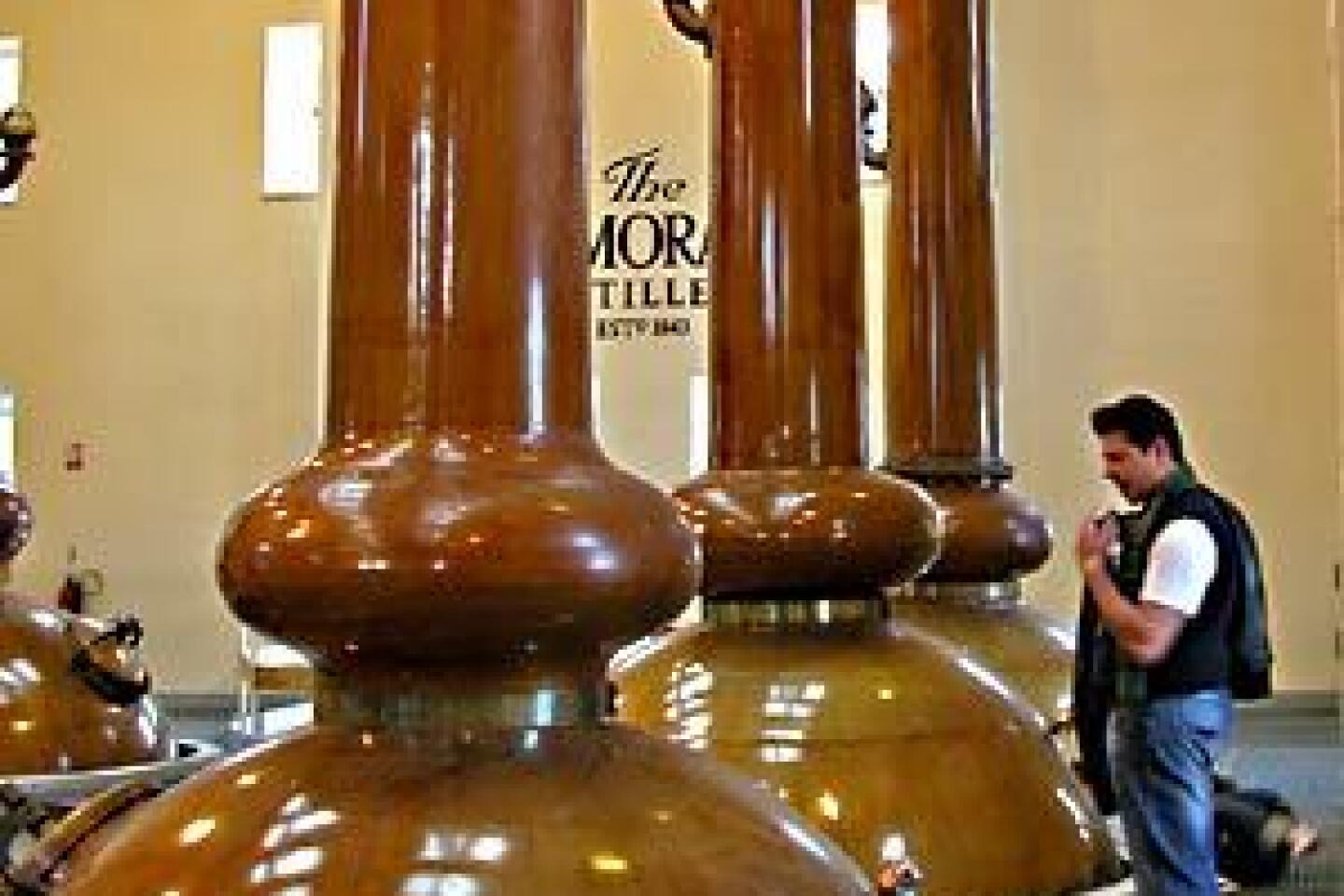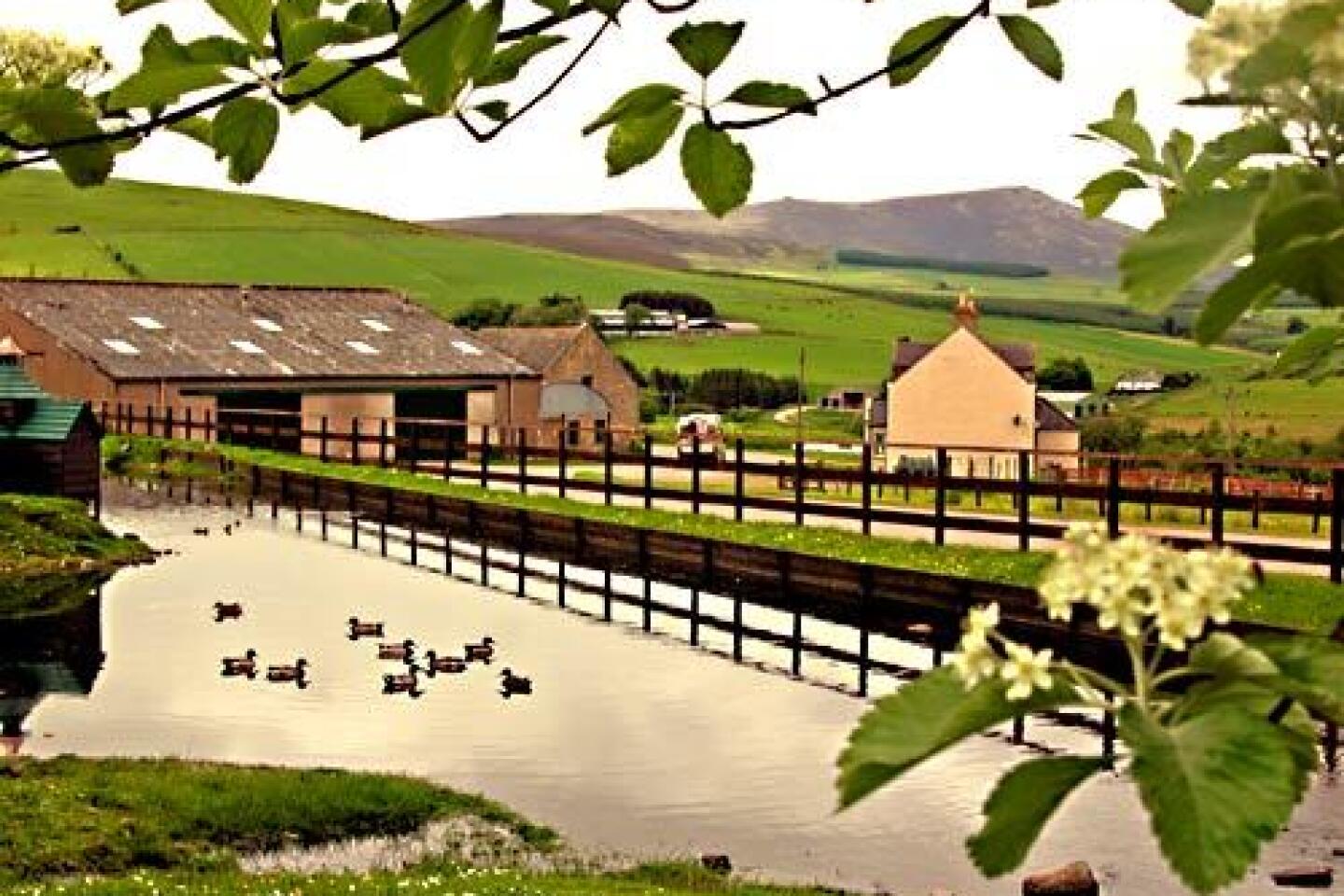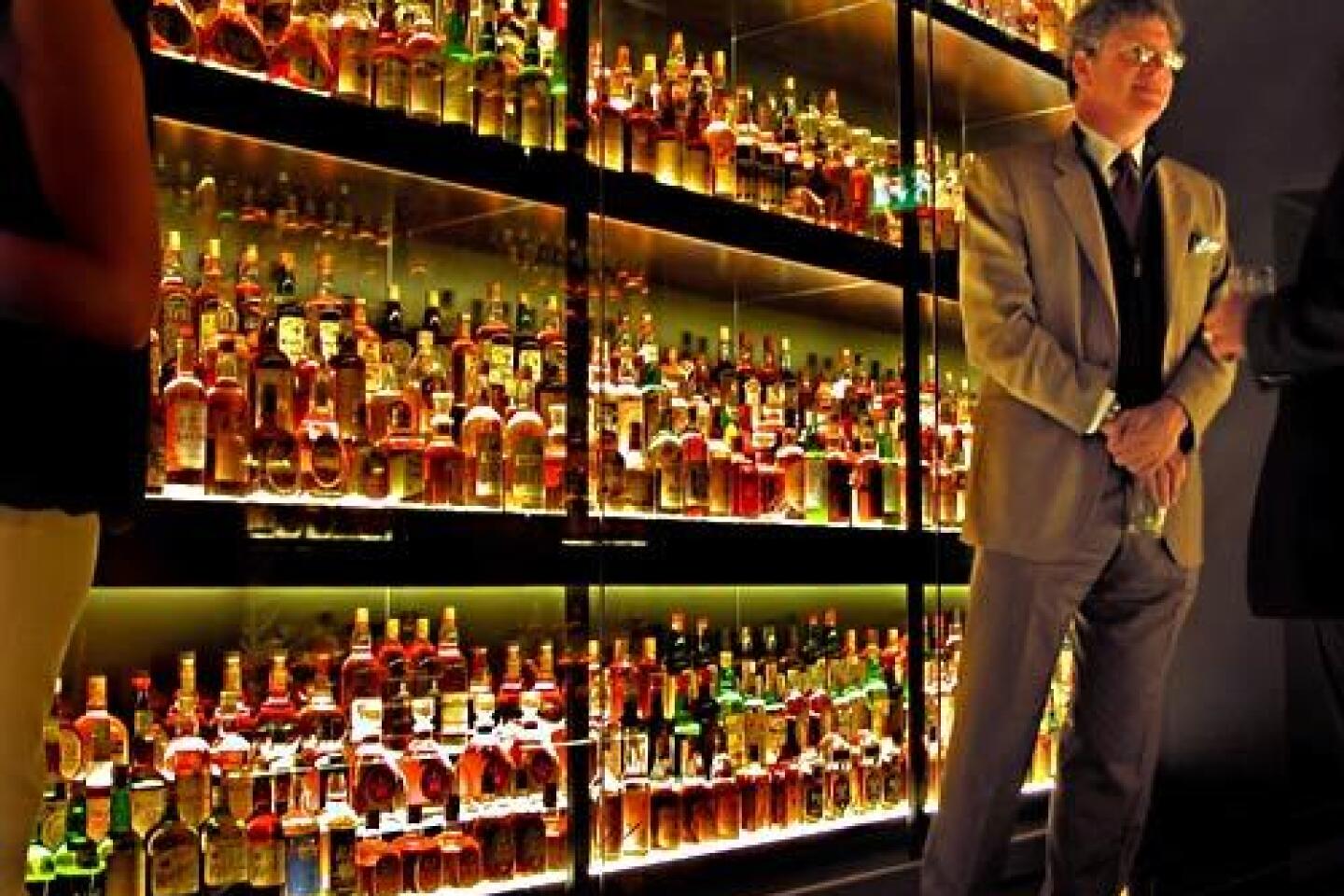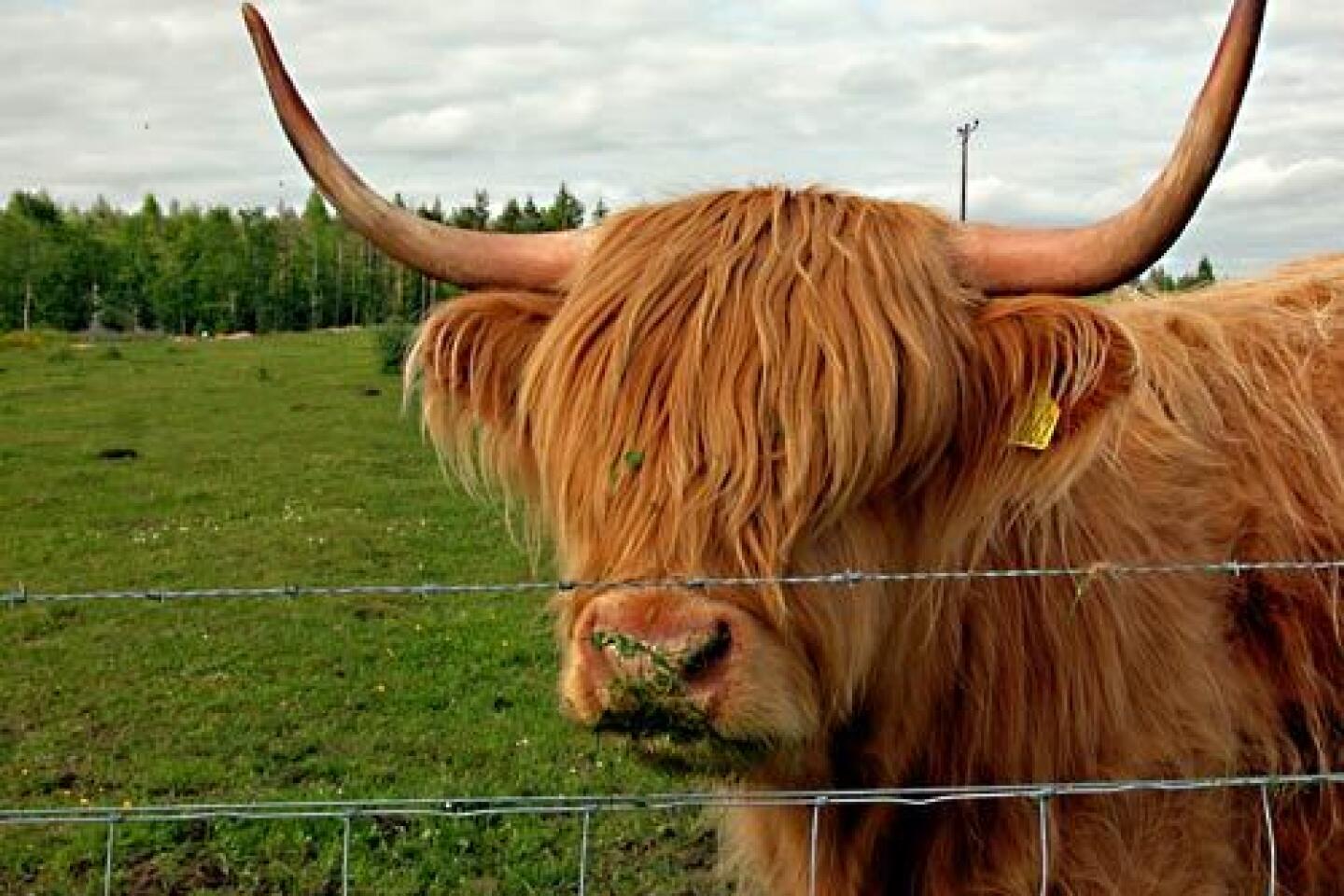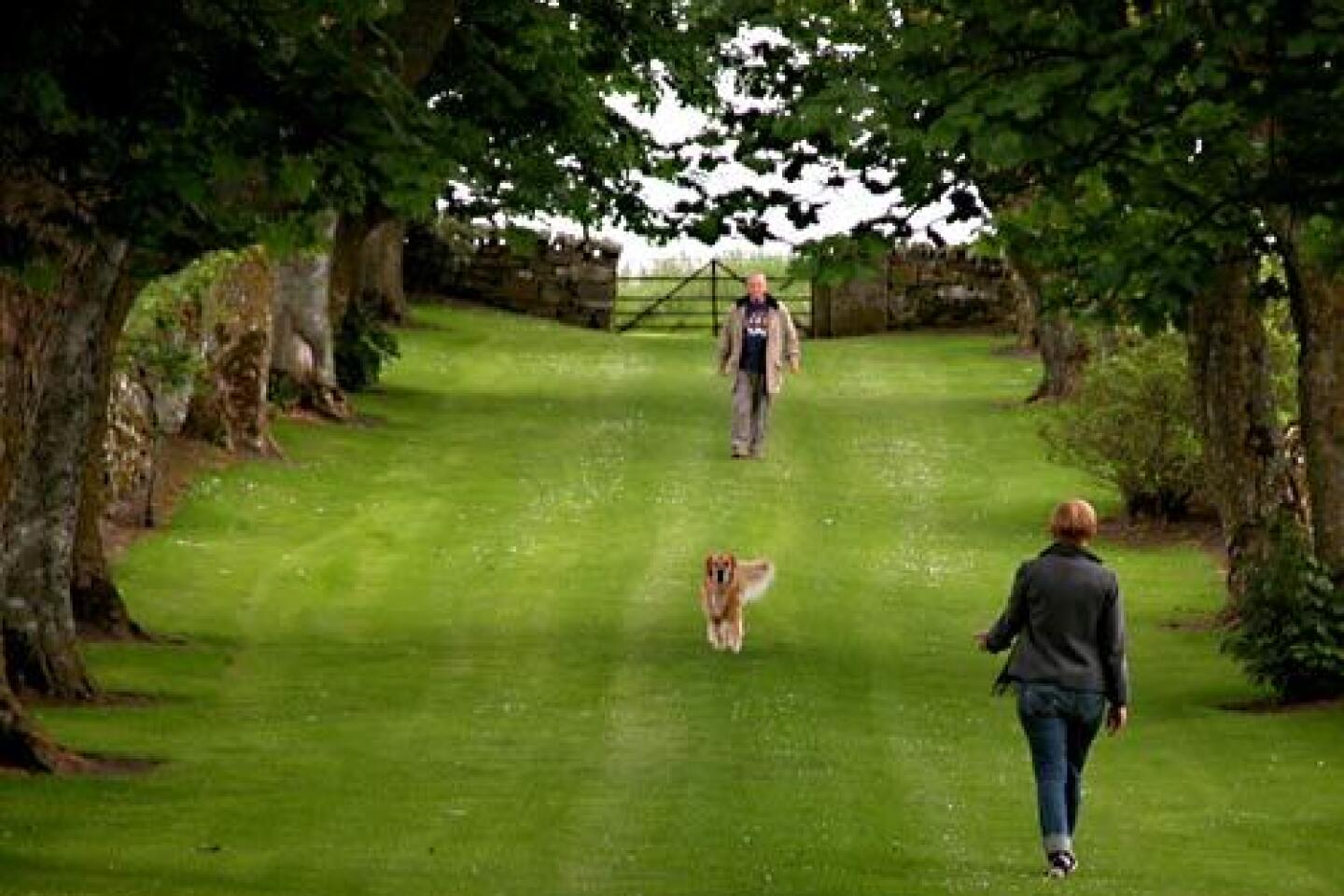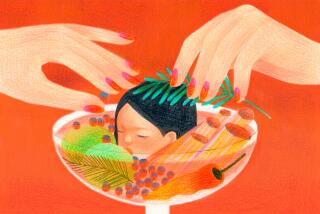Scotch: Sipping the water of life
- Share via
Reporting from Edinburgh, Scotland — The translucent, amber liquid winked at me from the long-stemmed glass in my hand.
“I describe Glenmorangie Original as a kaleidoscope,” master blender Rachel Barrie said as she led a tasting session with Scotland’s biggest-selling single malt Scotch. “You get a floral complexity, like being in an Italian garden, and some sizzling spices. The taste is silky smooth, creamy, with zesty tones.”
I wasn’t sure I could identify all those things, but I gave it a sporting try. I was visiting Glenmorangie Distillery in Tain, in the Highlands region of Scotland, and trying to learn how to appreciate Scotch, the nation’s best-known export. Besides, visiting Scotland without tasting Scotch would be like visiting France without tasting Champagne.
There’s certainly a lot of opportunity here to learn to appreciate it. There are more than 100 distilleries, and about half have tasting rooms.
And the capital, Edinburgh, offers the Scotch Whisky Experience, an interactive tour and tasting center that includes the world’s largest collection of Scotch — 3,500 bottles (www.scotchwhiskyexperience.co.uk).
Scotch is traditionally made only of barley, water and yeast and takes only a few weeks to make, but by law it must age at least three years. It develops an individual character as it ages, depending on environment, number of years it is aged and how it is stored. Premium brands may be 15 to 30 years old.
Connoisseurs often prefer single-malt Scotch — the product of a single distillery — to blends, which are the product of several distilleries. Could I tell the difference after a week of tasting Scotch? Perhaps, but I wouldn’t bet on it if someone asked me to participate in a blind taste test.
What did I learn about sampling Scotch?
— The people who make it don’t drink it neat. Everywhere I went, distillers said they added a few drops to water to “open up” the Scotch and release the aromas.
— If you plan to host a tasting party and your evening includes dinner, hold the tasting first; your sense of smell is sharper when you’re hungry. Tulip-shaped glasses are preferable to tumblers.
— Color isn’t as important with Scotch as it is with some types of liquor; instead, spend more time checking the “nose.” Add a few drops of water and try to distinguish the aromas: floral, fruity, spicy, smoky.
— Take a small sip, roll the Scotch over your tongue and swallow. What flavors do you detect? Hints of chocolate or vanilla, caramel, smoky or fruity flavors? Take notes so you can compare various types.
One thing distillers agree on: Unlike wine, Scotch doesn’t improve in the bottle, so there’s no excuse to keep it on the shelf. Drink up.
More to Read
Sign up for The Wild
We’ll help you find the best places to hike, bike and run, as well as the perfect silent spots for meditation and yoga.
You may occasionally receive promotional content from the Los Angeles Times.
